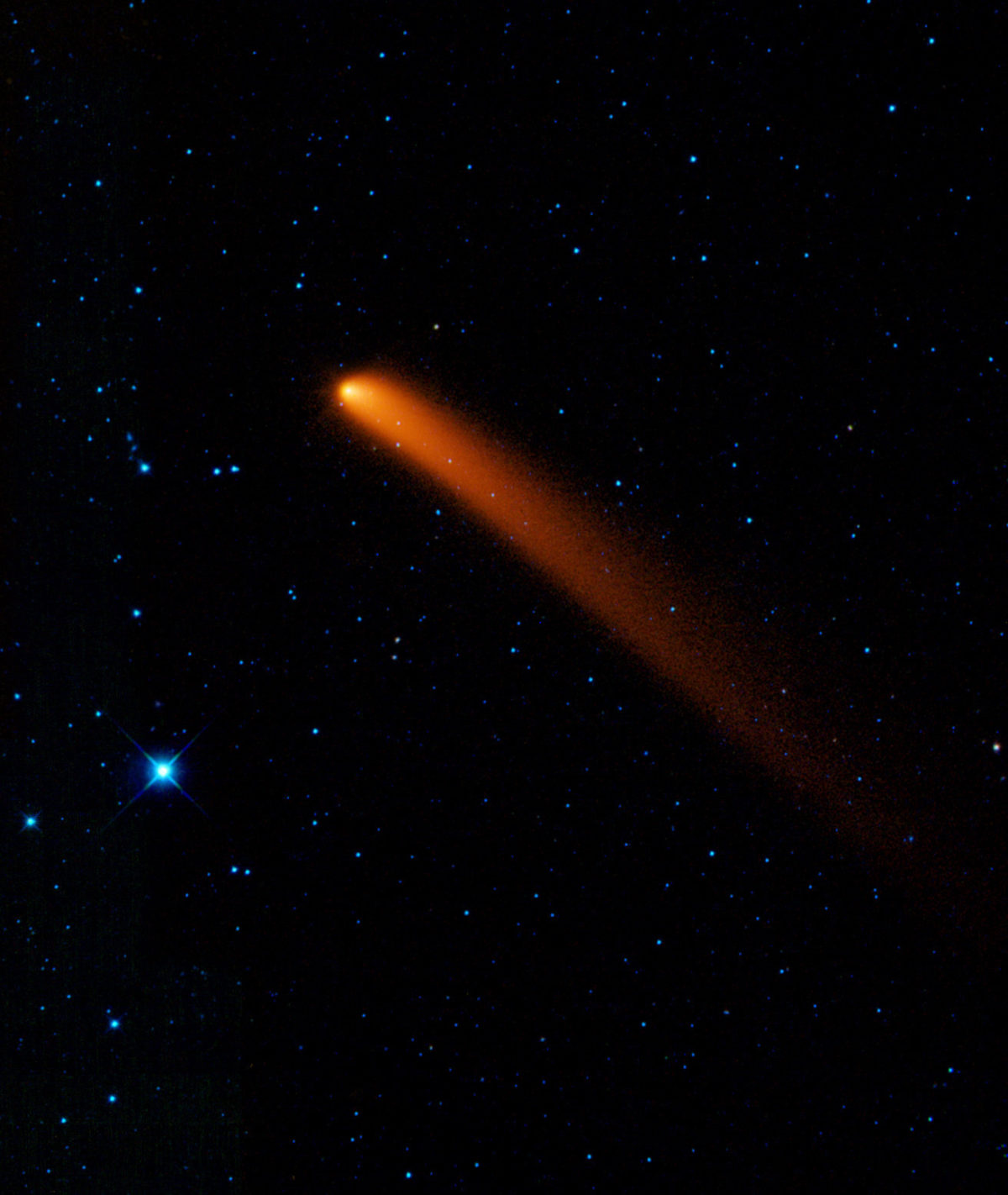Emily Lakdawalla • Feb 17, 2010
Lovely album of photos from WISE
Today the Wide-field Survey Explorer (WISE) team released a small album of beautiful astrophotos, showing a colorful star-forming cloud, an absolutely glorious image of the Andromeda galaxy, a cluster of galaxies, and this one, of comet C/2007 Q3 (Siding Spring):

The image made me curious about the expectations for WISE to observe, and discover, comets, so I fired off an email to WISE's principal investigator, Ned Wright. He told me "WISE has already seen lots of comets, mostly already known. Siding Spring is the biggest we've seen so far. We could with luck discover a dozen or more comets, with most of them being quite small and faint." I wrote before about the first comet they discovered. A quick check of the Near-Earth Object Confirmation Page at the Minor Planet Center shows five new objects recently observed by WISE (they are the ones with codes beginning in "W"), waiting for followup by ground-based observers so that orbits can be established. On that page they make no notation as to whether the objects are asteroids (more common) or comets (less common), so as not to prejudice observers; followup observers are expected to study their images and note if the object appears to look cometary, that is, if it has a coma.
There was an interesting email from WISE team member Amy Mainzer to the Minor Planets Mailing List a few days ago, talking about why followup of WISE's discoveries is valuable:
As WISE's scans run from ecliptic pole to ecliptic pole, you will see WISE objects spanning a wider range of declinations than is normally covered by ground-based surveys. We realize this may present a challenge to follow up observers, but this sky coverage may reveal new knowledge of the distribution of orbits of solar system objects.
You will note that there are now a number of WISE targets on the confirmation page. We encourage you to follow these up as WISE targets have high priority scientifically. The combination of visible light brightness measurements, improved orbit information and the WISE infrared fluxes will enable the determination of accurate diameters, albedos, surface properties, thermal forces, etc. This all requires ground-based follow-up. While most of our targets will be observed via established collaborations, the participation of the broader astronomical community plays a crucial role that has already been demonstrated for a number of WISE discoveries.The Siding Spring image is just one of several stunners released today; I am particularly enamored of the huge Andromeda Galaxy image, which I think I may have to print out and hang on my wall!
Support our core enterprises
Your support powers our mission to explore worlds, find life, and defend Earth. You make all the difference when you make a gift. Give today!
Donate

 Explore Worlds
Explore Worlds Find Life
Find Life Defend Earth
Defend Earth

